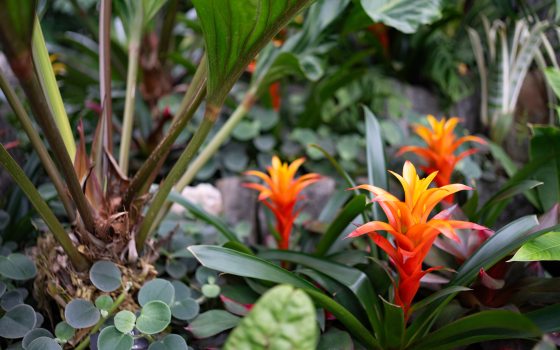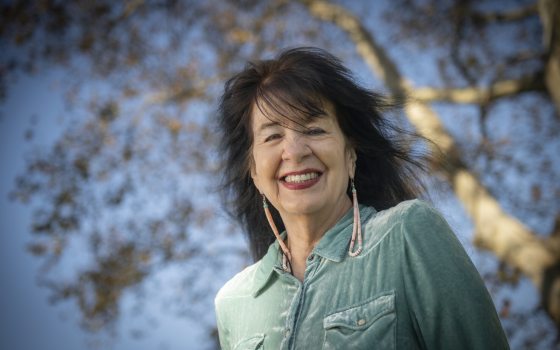Faced with a changing climate, the field of landscape design is moving into a period of change of its own. New ways of preserving and conserving landscapes need to be implemented to adapt to environmental challenges both now and in the future. The journey into a bright future for our natural and built landscapes begins with conversations and connections—as the impacts of changing climates and the need for resiliency affect all. On October 15 and 16, Longwood will host the two-day Designing Change: Landscape Continuity in an Age of Uncertainty symposium, during which the future of landscape preservation will be explored in the context of today’s unprecedented global change. We invite you to learn more as the leading voices in landscape architecture, ecology, and cultural heritage gather at Longwood, led by Designing Change curator Anita Berrizbeitia, who served as an advisor during the preservation process of Longwood’s Cascade Garden, designed by the famous Brazilian landscape architect and artist Roberto Burle Marx.
Professor of Landscape Architecture at the Harvard Graduate School of Design, Berrizbeitia is a scholar of Roberto Burle Marx. Her book Roberto Burle Marx in Caracas: Parque del Este 1956–1961 was awarded the J.B. Jackson Book Prize. Her teaching and research focus on the political ecology and productive functions of landscapes in processes of urbanization and climate adaptation. Most recently, she was the curator of the exhibition Forest Futures at the Harvard Graduate School of Design, which explored the intertwined histories of forests, society, and design.
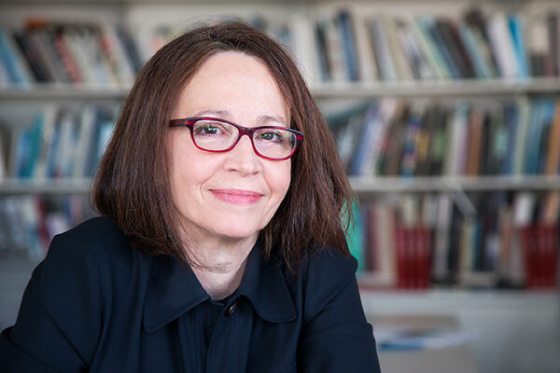
Anita Berrizbeitia (pictured) is a licensed landscape architect, and she has worked on a broad range of projects and competitions, including urban design, campus planning, public parks, and residential gardens. She is also a consultant for national and international landscape architectural firms. Photo provided by Anita Berrizbeitia.
Berrizbeitia’s idea for the Designing Change symposium arose from the inspiring and groundbreaking work that was done to relocate and reconstruct our famous Cascade Garden … and a desire to not only celebrate the achievement but also use it as a jumping off point into further discussion surrounding preservation, and what it means now that we must adapt to climate change. Through a roster of 18 speakers—ranging from architects and landscape architects to writers and professors to researchers and activists—Berrizbeitia brings together those who “work at the intersection of historic sites and adaptive sites” in order to bring different, but equally fascinating, perspectives into the conversation.
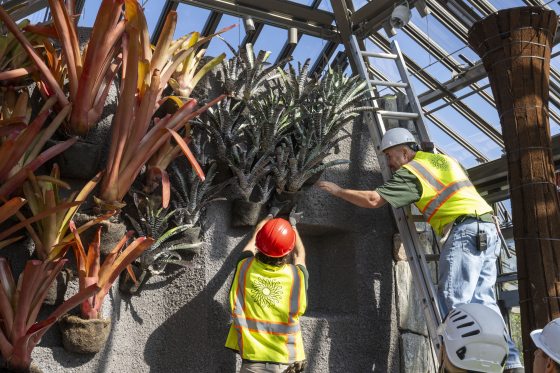
“Landscape architecture is always a team effort,” says Berrizbeitia. “It involves many different disciplines, many different fields.” Photo by Hank Davis.
Reconstructed and preserved into its own, free-standing space as part of Longwood Reimagined, the Cascade Garden is a modernist masterpiece—and the only surviving Burle Marx design in North America. “It was extraordinary to see Longwood give so much commitment to this project,” says Berrizbeitia. “I don’t know that I’ve seen anything so magical. There was a hyperawareness of all the materials (in the garden) in a way that I rarely see.”
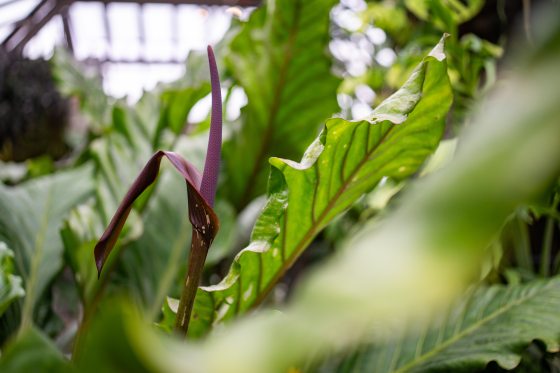
“The Cascade Garden is the kind of place that makes you think … compare across materials worlds—say, vegetation and mineral—and understand that it is all part of biodiversity,” says Berrizbeitia. Photo by Holden Barnes.
Berrizbeitia first became interested in Burle Marx when she was growing up in Caracas, Venezuela, and frequently visited Parque del Este, designed by Burle Marx. Conceived of, designed, and built in the 1950s and early 1960s, Parque del Este is a verdant 190-acre system of parks in the urban Caracas environment. It is one of the world’s most important and acclaimed modern parks … and it inspired in Berrizbeitia a strong interest in landscape architecture.
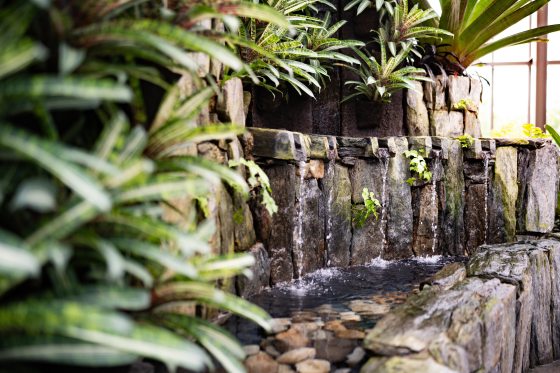
“When you see a Burle Marx garden, it fills your senses and your mind and stimulates your thinking about the environment … about life … about design … and about beauty,” says Berrizbeitia. Photo by Holden Barnes.
“He was a designer in a postcolonial context … which was something that was rarely acknowledged while I was studying his work in graduate school,” says Berrizbeitia. “I found that Burle Marx was open to synthesizing, translating, and adapting to change. His work is an expression of (Latin American) historical processes and cultural evolution.”
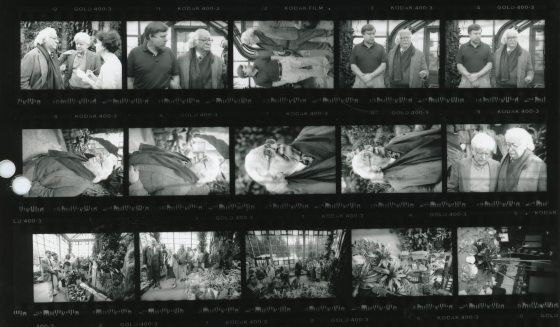
Commissioned by Longwood in 1989 and first opened in 1993, the Cascade Garden “fits all the richness of a Burle Marx landscape,” says Berrizbeitia. “It’s like a piece of jewelry.” Photos by Larry Albee.
While both are important to the future of landscape design, there is an interesting contrast between preservation and conservation. To preserve a natural space is to replicate it, while conserving a space involves adapting to and guiding the landscape through present and future environmental conditions in order for it to thrive.
“(Climate adaptation) is something we are going to need to grapple with,” says Berrizbeitia. “Preservation is historically something that has looked to the past, and it’s going to have to look at the future now, reimagine, and redefine what is the broader set of concerns for the field in the future.”
The Cascade Garden was able to be preserved and recreated in exactly the same way it was originally built—thanks to the customized, indoor conservatory space created for the garden. But this isn’t always the case with outdoor gardens, especially as weather patterns and temperatures continue to shift, vegetation and wildlife migrate, and new ecological relationships emerge. Adaptation is key to maintaining the health and beauty of our most beloved gardens and landscapes. Change itself has become central to the design of landscapes.

“We all have something to share and to do on behalf of adaptation,” says Berrizbeitia. “And everyone can contribute to that.” Photo by Hank Davis.
This symposium is intended for those with broad interests in the natural world as well as a passion for preserving and aiding the health and beauty of our planet—from professional landscape architects and garden designers, to home gardeners and plant lovers, to ecologists, ethnographers, and anthropologists.
“The main message of the Designing Change symposium is not necessarily to take a defensive position (in the face of climate change) but rather welcome change as an opportunity that will make us more creative … and I find that so utterly liberating,” says Berrizbeitia. “We will work towards a greater common project … and it’s not all doom and gloom. We are at a threshold that asks us ‘what are we going to do with this opportunity’?”
Editor’s note: Explore the future of landscape preservation in the context of today’s unprecedented global change, hear from experts, and enjoy two days of engaging discussions in The Fountain Room during our Designing Change symposium on October 15–16. Register now! Registration closes on September 30.
